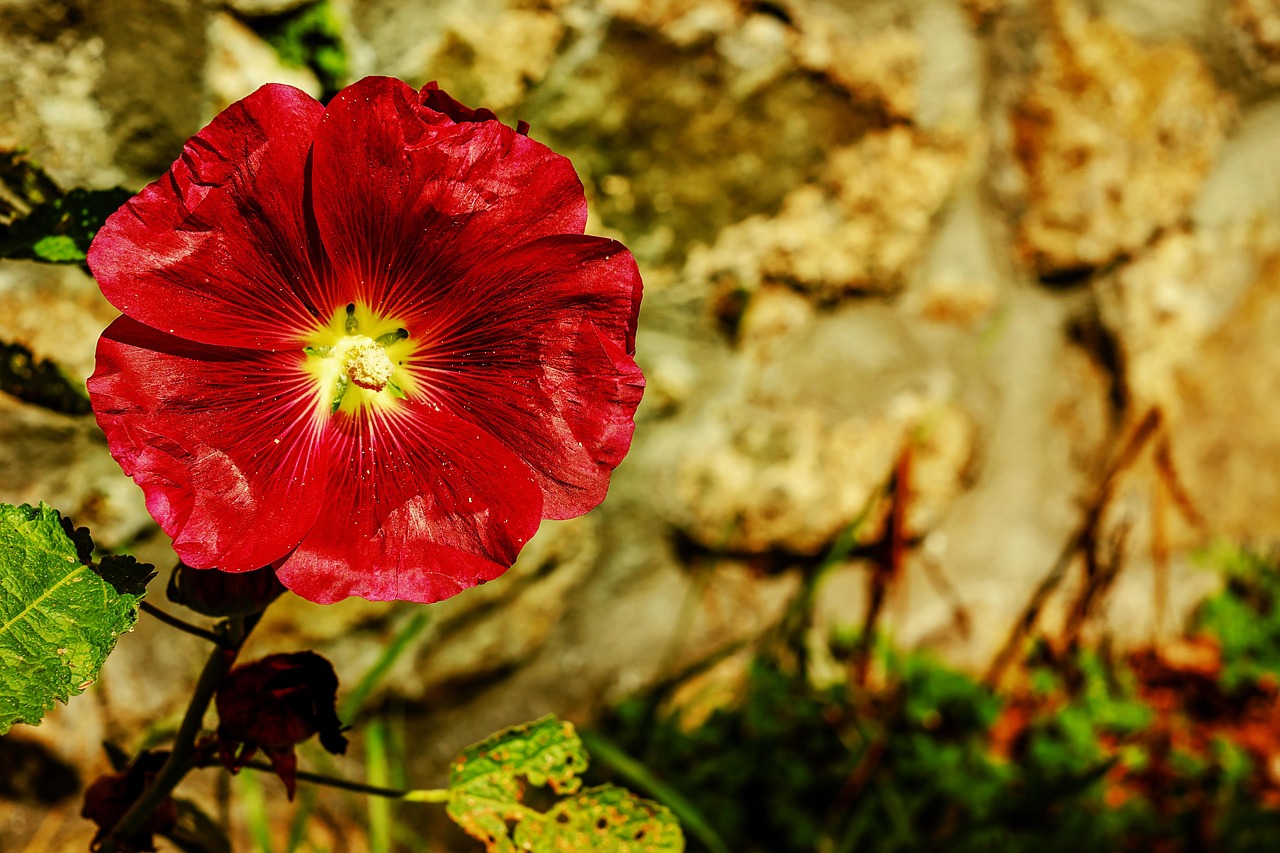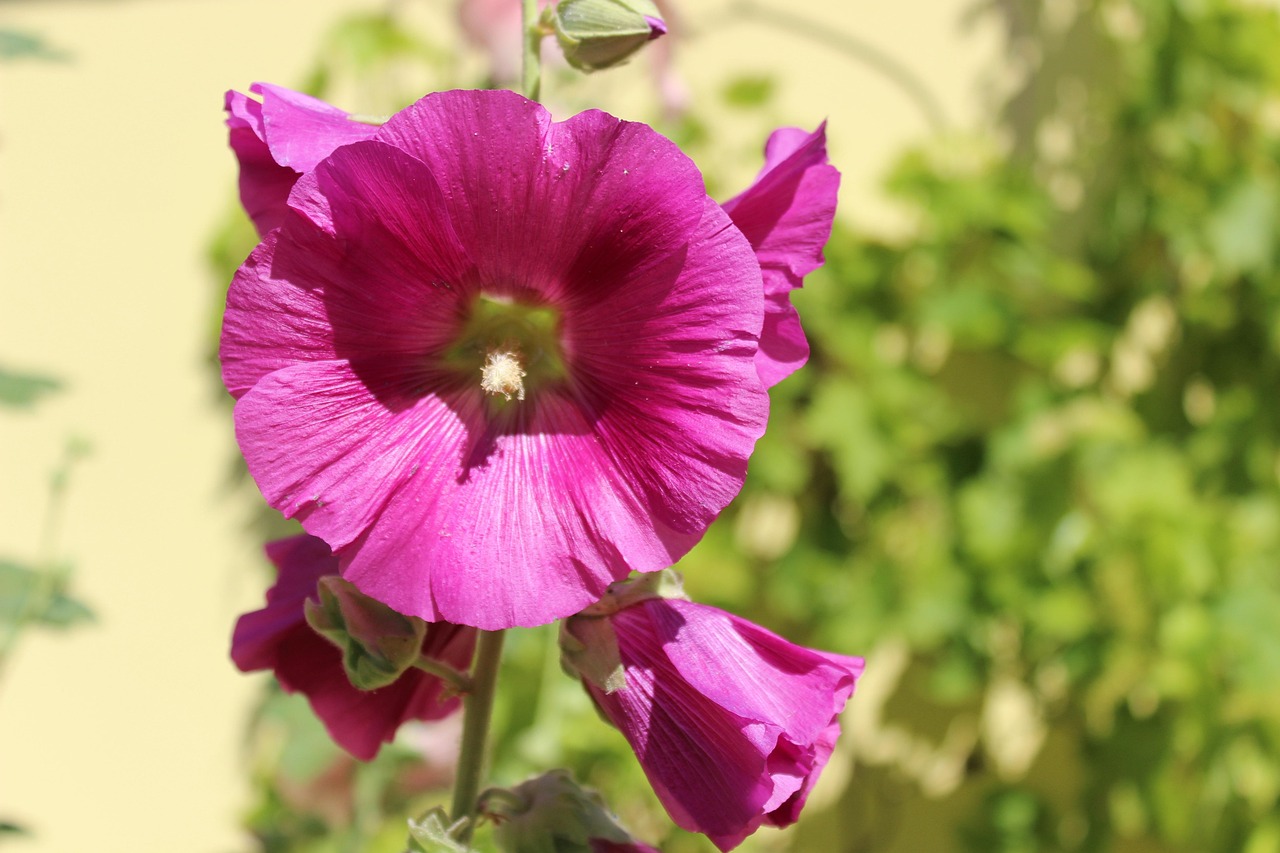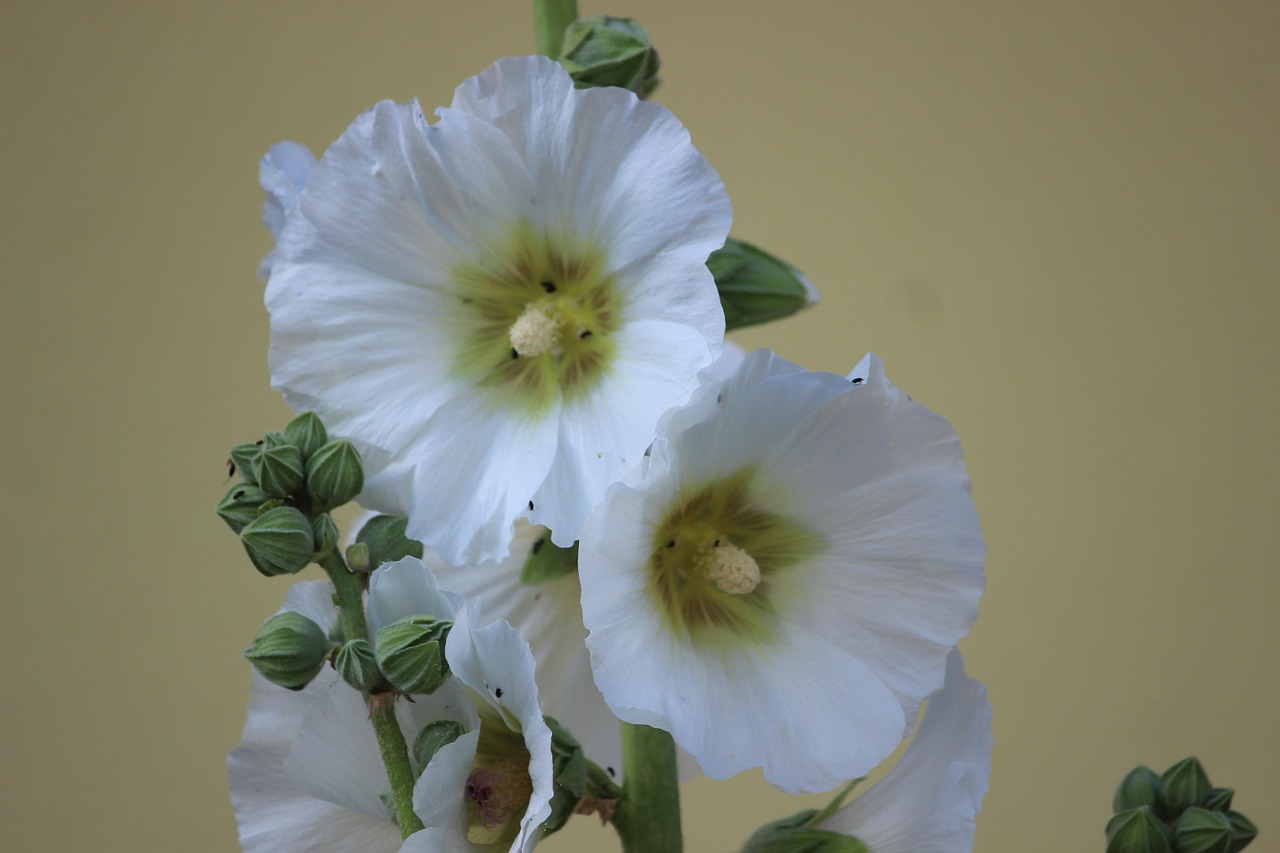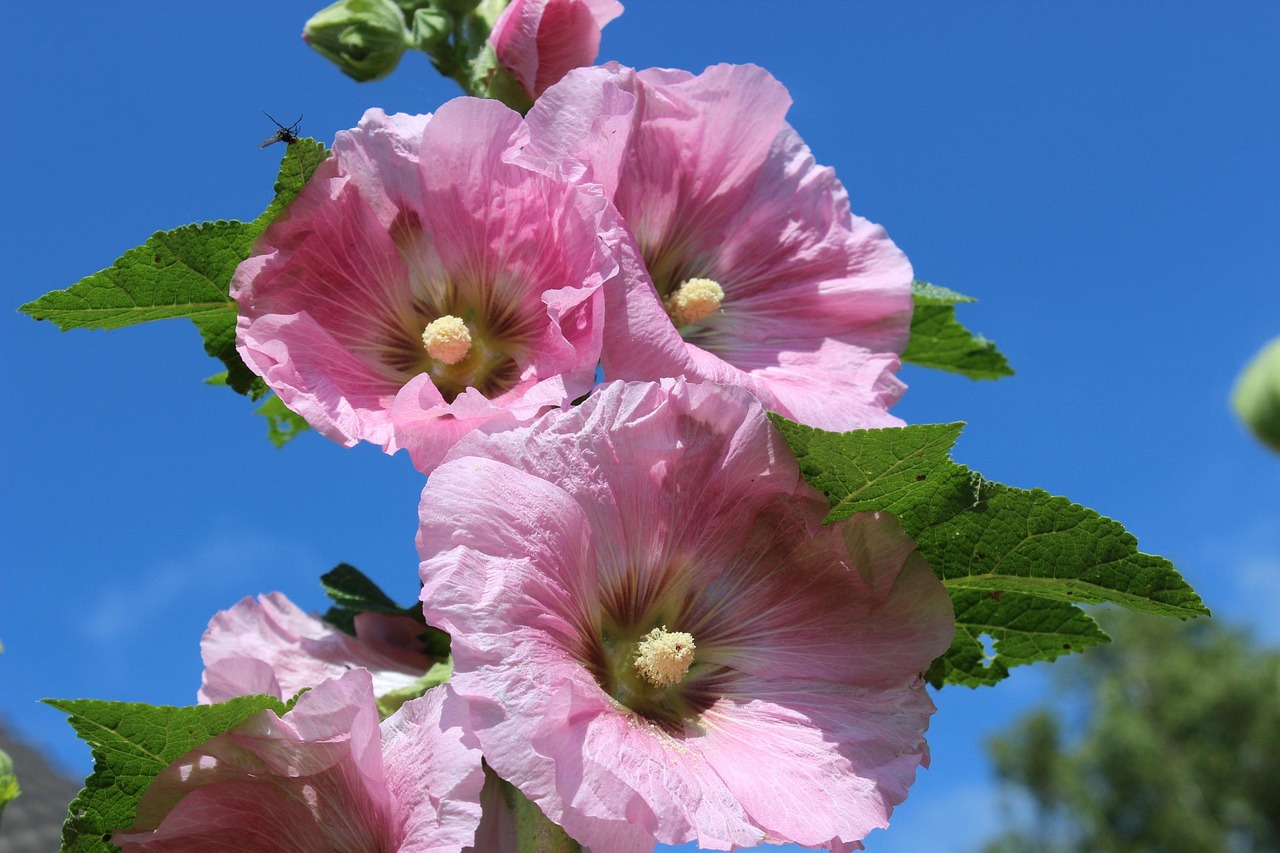To grow and care for hollyhocks effectively, choose a sunny location with well-draining soil. Water them regularly, especially during dry spells, and provide support for taller varieties. Fertilize sparingly and remove spent flowers to encourage new blooms.
Hollyhocks are a beloved garden flower known for their tall spikes of colorful blooms. These biennial plants can add vertical interest to any garden and come in a variety of colors. They can reach heights of up to 8 feet, making them a stunning focal point. Originally native to Europe and Asia, hollyhocks have been cultivated in gardens for centuries.

Growing hollyhocks can be quite rewarding, but it requires some knowledge and attention to detail. Understanding their growth habits and care requirements will help ensure your hollyhocks thrive in your garden. Below are some essential tips for growing and caring for these beautiful plants.
Understanding Hollyhock Growth
Hollyhocks typically grow as biennials, meaning they usually bloom in their second year. However, with proper care, they can behave like perennials in some climates. They produce large rosettes of leaves in their first year, followed by tall flower spikes in the second year. Here are some key points about hollyhock growth:
| Growth Stage | Description |
|---|---|
| First Year | Leaves develop into large rosettes; no flowers. |
| Second Year | Tall flower spikes emerge; blooms appear. |
| After Blooming | Seed formation occurs; plants may self-seed. |
Hollyhocks prefer full sun for at least six hours a day. This sunlight helps them produce vibrant blooms. They thrive in well-draining soil enriched with organic matter. While they can tolerate various soil types, heavy clay or poorly drained soils can lead to root rot.

Planting Hollyhocks
The best time to plant hollyhocks is in the spring or fall. When selecting a planting site, ensure it receives ample sunlight. Follow these steps for successful planting:
- Prepare the soil by loosening it and mixing in compost or well-rotted manure.
- Space the seeds or seedlings about 18 to 24 inches apart to allow for growth.
- Water the plants after planting to help establish roots.
- Add mulch around the base to retain moisture and suppress weeds.
Hollyhocks can also be started indoors six to eight weeks before the last frost date. Transplant the seedlings outdoors once the risk of frost has passed. This method allows for earlier blooms in the growing season.
Caring for Hollyhocks
Caring for hollyhocks involves regular maintenance to keep them healthy and blooming beautifully. Here are some essential care tips:

- Watering: Keep the soil consistently moist, especially during dry spells. Avoid overhead watering to prevent fungal diseases.
- Fertilization: Apply a balanced fertilizer once in early spring. Over-fertilizing can lead to excessive foliage growth at the expense of blooms.
- Pest Control: Watch for common pests such as aphids and spider mites. Use insecticidal soap or neem oil if infestations occur.
- Disease Management: Ensure proper spacing and airflow around plants to reduce the risk of fungal diseases like rust.
- Support: Taller varieties may require staking or support to prevent bending or breaking under their weight.
By following these expert tips, you will create an environment that encourages healthy growth and abundant blooming of your hollyhocks. With patience and care, these stunning flowers can enrich your garden for many seasons to come.
Choosing the Right Varieties of Hollyhocks
When selecting hollyhocks for your garden, it is essential to choose the right varieties that suit your climate and preferences. There are numerous species and cultivars available, each with unique characteristics. Understanding these differences can help you create a vibrant and diverse display.
Popular Hollyhock Varieties
Here are some of the most popular hollyhock varieties you might consider for your garden:

- Alcea rosea: Commonly known as the garden hollyhock, this is the most popular variety. It features tall spikes with large, colorful flowers in shades of pink, red, yellow, and white.
- Black Hollyhock: This dramatic variety has dark, almost black flowers. It adds a unique touch to any garden design.
- Peach Hollyhock: Known for its soft peach-colored blooms, this variety is perfect for creating a romantic garden atmosphere.
- Chater’s Double: A double-flowered variety that produces fluffy blooms. It comes in various colors and adds a lush look to your garden.
- Single Flowering: These hollyhocks have single blooms and are often more resilient against diseases. They are ideal for gardeners looking for low-maintenance options.
Considerations for Selection
When choosing hollyhock varieties, consider the following factors:
- Climate: Some varieties may perform better in certain climates. Research which types are best suited for your region.
- Height: Determine how tall you want your hollyhocks to grow, as some types can reach heights of up to 8 feet.
- Color Preference: Choose colors that complement your existing garden design or create contrasts that pop.
- Blooming Time: Some varieties may bloom earlier or later than others. Plan accordingly if you want continuous blooms throughout the season.
Propagation Techniques for Hollyhocks
Propagating hollyhocks can be an enjoyable way to expand your garden without purchasing new plants. There are several techniques you can use to propagate hollyhocks effectively.
Seed Propagation
Growing hollyhocks from seeds is one of the most common methods. Here is a simple guide to seed propagation:
- Collect Seeds: After blooming, allow the flowers to form seed pods. Once they dry out, collect the seeds.
- Prepare Soil: Use a seed-starting mix or well-draining soil for optimal growth.
- Sow Seeds: Plant seeds about ¼ inch deep and space them evenly.
- Water Gently: Mist the soil to keep it moist but not soggy.
- Provide Light: Ensure the seeds receive plenty of light by placing them in a sunny location or under grow lights.
Division Method
If you have established hollyhocks, you can also propagate them through division. This method works well with perennial varieties:
- Select Healthy Plants: Choose robust plants that have been growing for at least two years.
- Dig Up the Plant: Carefully dig around the plant to avoid damaging the roots.
- Divide the Roots: Gently separate the root ball into smaller sections, ensuring each section has roots and shoots.
- Replant Immediately: Replant the divided sections in prepared soil and water thoroughly.
Pest and Disease Management
Pests and diseases can pose significant threats to hollyhocks. Being proactive in prevention and management is key to keeping your plants healthy. Here are some common issues and solutions:
Pest Control
The following pests may affect hollyhocks:
- Aphids: Small green insects that suck sap from leaves. Use insecticidal soap or neem oil to control them.
- Spider Mites: Tiny pests that create webs on plants. Increased humidity can help deter them.
- Caterpillars: Some caterpillars may feed on leaves. Hand-picking or using organic pesticides can help manage them.
Disease Prevention
Diseases like rust and powdery mildew can affect hollyhocks. To prevent these issues:
- Avoid Overcrowding: Space plants adequately to ensure good air circulation.
- Water at the Base: Watering at the base of plants can help keep foliage dry and reduce disease risks.
- Practice Crop Rotation: Rotate planting locations every few years to minimize soil-borne diseases.
With proper attention to variety selection, propagation techniques, and pest management, your hollyhocks can thrive and bring beauty to your garden for many seasons.
Seasonal Care for Hollyhocks
Understanding the seasonal care of hollyhocks is key to ensuring their health and beautiful blooms. Different seasons require specific attention to watering, fertilizing, and pruning. Below is a guide on how to care for hollyhocks throughout the year.
Spring Care
Spring is the time when hollyhocks begin to wake from dormancy. Here are some essential tasks for spring:
- Soil Preparation: As the frost recedes, prepare the soil by adding compost or well-rotted manure. This enriches the soil with nutrients.
- Fertilizing: Apply a balanced fertilizer as new growth appears. This will support healthy leaf and flower development.
- Watering: Begin regular watering, especially if rainfall is scarce. Keep the soil evenly moist but not saturated.
- Pest Monitoring: Check for pests such as aphids and spider mites early in the season. Prompt action can prevent infestations.
Summer Care
During the summer months, hollyhocks will be in full bloom. Proper care during this time helps maintain vibrant flowers:
- Consistent Watering: Ensure that your hollyhocks receive consistent moisture, particularly during hot spells. Deep watering is preferable to encourage root growth.
- Deadheading: Remove spent blooms to encourage new flowers and prolong the blooming period. This practice also helps prevent seed formation if you wish to control spreading.
- Disease Monitoring: Keep an eye out for signs of rust or powdery mildew, especially in humid conditions. Treat affected plants immediately with appropriate remedies.
Fall Care
As summer fades, fall care focuses on preparing hollyhocks for winter:
- Cutting Back: After the first frost, cut back any dead foliage to prevent disease. Leave healthy leaves and stems for winter protection.
- Mulching: Apply a layer of mulch around the base of the plants. This will help insulate the roots against frost and retain soil moisture.
- Seed Collection: If you want to save seeds, allow some flower spikes to dry on the plant. Once dried, collect seeds for planting next season.
Winter Care
In winter, hollyhocks enter a dormant phase. However, some care is still beneficial:
- Protection from Harsh Weather: In areas with extreme cold, consider covering plants with frost cloth or additional mulch for insulation.
- Avoid Disturbing Roots: Avoid heavy foot traffic around established plants during winter months to protect the root system from compaction.
- Planning for Spring: Use this time to plan your spring planting and propagation strategies. Consider which varieties worked best and any adjustments needed.
Companion Planting with Hollyhocks
Companion planting can enhance the growth of hollyhocks and improve garden health. By choosing compatible plants, you can create a thriving ecosystem in your garden. Here are some great companion plants for hollyhocks:
| Companion Plant | Benefits |
|---|---|
| Lavender | Attracts pollinators and repels certain pests, enhancing overall garden health. |
| Sage | This herb can deter harmful insects while providing a contrasting texture in the garden. |
| Zinnias | Adds vibrant color and attracts beneficial insects like butterflies. |
| Dill | This herb can attract predatory insects that will help control pest populations. |
| Marigolds | Known for pest deterrent properties; they can help protect hollyhocks from nematodes and aphids. |
When planning your garden layout, consider incorporating these companion plants to maximize benefits. The right combinations can lead to improved growth and bloom production in hollyhocks while enhancing the overall aesthetic of your garden space.
Caring for Hollyhocks in Containers
If space is limited, growing hollyhocks in containers can be an excellent alternative. Container gardening allows for flexibility and easier maintenance. Here are some tips for successfully growing hollyhocks in containers:
- Selecting Containers: Choose pots that are at least 12 inches deep and wide to accommodate the root system.
- Soil Choice: Use high-quality potting soil that provides good drainage. Adding perlite or vermiculite can improve aeration.
- Watering Needs: Container plants may require more frequent watering than those planted in the ground, especially during hot weather.
- Nutrient Management: Fertilize regularly with a diluted liquid fertilizer every few weeks to ensure your hollyhocks receive adequate nutrients.
- Sunlight Exposure: Place containers in a location that receives full sun to encourage healthy growth and blooming.
Caring for hollyhocks in containers offers flexibility and allows you to showcase these beautiful flowers on patios, porches, or balconies while enjoying their beauty and charm throughout the growing season.
Seasonal Challenges and Solutions
While hollyhocks are generally hardy, they can face seasonal challenges that may affect their growth and blooming. Being prepared for these issues can help you maintain healthy plants throughout the year.
Dealing with Extreme Weather
Hollyhocks can be sensitive to extreme weather conditions. Here are some strategies for managing these challenges:
- Heat Waves: During periods of extreme heat, increase watering frequency to keep the soil moist. Consider using shade cloth to protect plants from intense sun exposure.
- Heavy Rainfall: Ensure that your planting area has excellent drainage to prevent waterlogging. If possible, plant hollyhocks on raised beds to improve drainage.
- Late Frosts: If there are late frosts in your area, cover young plants with fabric or cloches to protect them. Remove covers during the day to allow sunlight and airflow.
Maintaining Soil Health
Healthy soil is crucial for the success of hollyhocks. Regularly assessing and improving your soil can lead to better growth and flowering:
- Soil Testing: Conduct a soil test to determine pH and nutrient levels. This information will help guide amendments needed for optimal growth.
- Organic Matter: Incorporate organic matter such as compost or aged manure into your soil every spring. This will enhance soil fertility and structure.
- Mulching: Use mulch not only for moisture retention but also to suppress weeds and maintain a stable soil temperature.
Encouraging Pollinators
Hollyhocks are beneficial in attracting pollinators like bees and butterflies to your garden. To enhance this effect, consider the following tips:
- Diverse Planting: Incorporate a variety of flowering plants around your hollyhocks to attract a wider range of pollinators.
- Avoid Pesticides: Minimize pesticide use, particularly during blooming periods, to protect beneficial insects.
- Provide Habitat: Create a pollinator-friendly environment by including native plants, providing water sources, and allowing some areas of wildflowers to grow.
Final Thoughts
Caring for hollyhocks can be a fulfilling experience that rewards gardeners with stunning floral displays. By understanding their needs and challenges throughout the seasons, you can cultivate vibrant plants that thrive in your garden. From selecting the right varieties to managing pests and diseases, each aspect plays a vital role in ensuring a successful growing season.
The beauty of hollyhocks lies not only in their colorful blooms but also in their ability to bring life to any garden setting. By following the expert tips outlined in this article, you can create an enchanting space filled with these majestic flowers. With patience, care, and a little bit of effort, your hollyhocks will flourish, becoming a cherished part of your garden landscape for years to come.
Remember, gardening is a journey of learning and discovery. Each season presents new opportunities to enhance your gardening skills and enjoy the rewards of your labor. Embrace the process, and let your love for hollyhocks inspire creativity in your gardening endeavors.
